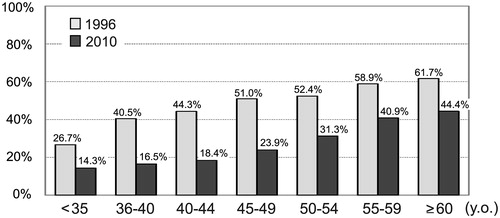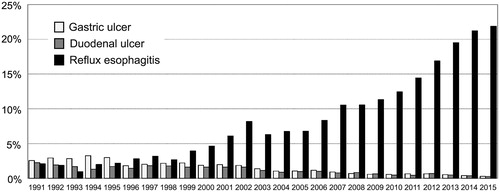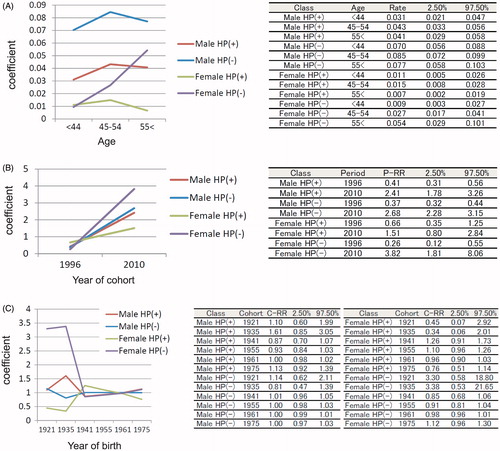Figures & data
Figure 1. Rapidly changed prevalence of H. pylori infection from 1996 to 2010 in Japan. Seropositivity rates of anti-H. pylori IgG at ages <35 (20–34), 35–39, 40–44, 45–49, 50–54, 55–59, and ≥60 (60–88) years among the generally healthy persons are shown, based on the data of 6,452 subjects in 1996 and 13,263 subjects in 2010. Total numbers tested in each age group/year are in parentheses.

Figure 2. The prevalence of gastric ulcer, duodenal ulcer, and reflux esophagitis from 1991 to 2015 in Japan. Total 211,347 general population subjects who underwent upper gastrointestinal endoscopy from 1991 to 2015 were investigated.

Table 1. Univariate analyses of three acid-related diseases with age, sex, and H. pylori infection, based on the data of 6,452 generally healthy subjects in 1996 and 13,263 generally healthy subjects in 2010.
Table 2. Multivariable logistic regression analyses to evaluate associations of age, sex, and H. pylori infection with three major benign acid-related diseases using the data of 6,452 generally healthy subjects in 1996 and 13,263 generally healthy subjects in 2010.
Table 3. Panel data analyses to evaluate variables using the data of 6,452 generally healthy subjects in 1996 and 13,263 generally healthy subjects in 2010.

